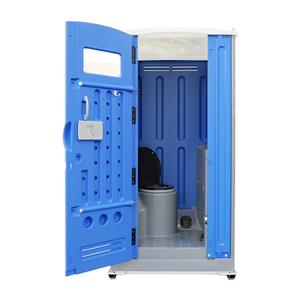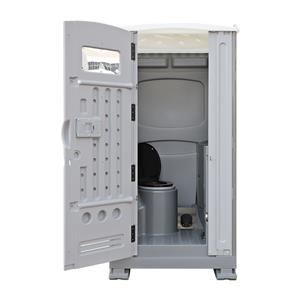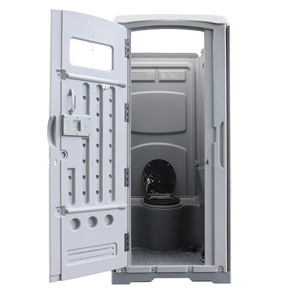How a flushable portable toilet works?
At Toppla, we've spent years focused on providing robust, reliable sanitation solutions for diverse environments.
Think of a portable flush toilet as two main sections working together, rather than a single bucket. This two-tank system is the key to its flushing capability and hygiene.

Portable Flush Toilet Up Top: The Fresh Water Supply: The upper part of the unit holds a reservoir of clean water. This water is specifically for flushing, kept entirely separate from any waste.
Making the Flush: The Pumping Action: This is where the "flush" happens. You'll activate a pump – usually operated manually with a lever or bellows, though some models might be electric.
Down Below: The Sealed Holding Tank: All the waste and flush water collect in a secure, sealed tank located in the lower section. Managing the Waste: Simple Emptying: When the lower holding tank is full, it’s designed to be easily disconnected from the upper section. It has a handle for carrying and a secure cap to prevent spills during transport. You simply carry the sealed tank to a designated disposal point – like a dump station – open the pour spout, and empty it hygienically.
It's this straightforward separation of clean water and waste, combined with a simple pumping mechanism and a sealed tank, that makes a portable flush toilet a far more advanced and pleasant option than non-flushing alternatives.
Putting the 'Portable Flush' Mechanism to Work: Real Benefits
The way these toilets are built translates directly into practical advantages:
A Much Cleaner Experience: Flushing clears the bowl after each use. This isn't just about aesthetics; it significantly improves hygiene and makes the user experience feel far more comfortable – closer to a standard toilet.

Serious Odor Control: The sealed holding tank, paired with the right chemicals, is highly effective at containing smells. This is absolutely essential whether you're using a simple portable toilet at a family gathering or a more robust Steel Skid Portaloo on a demanding job site. Nobody wants unpleasant odors lingering.
True Portability & Standalone Use: Because they don't need external water or sewage connections, these units are incredibly flexible. .
Our hands-on experience confirms that this combination of straightforward engineering and practical features is what makes a quality portable flush toilet a reliable workhorse.
Portable Flush Toilet: Quick Answers to Things You Might Be Wondering
Thinking about getting one? Here are a few common questions people ask:
How often do I need to empty the waste? It varies greatly based on the tank size and how many people are using it. Check the model's capacity, but typically, for moderate use, it might be every few days.
Will it smell bad? When used correctly with the recommended chemicals, the sealed tank is very effective at containing odors. Proper maintenance is key.
Is emptying a messy job? The design aims to make it as clean as possible. The tanks detach easily, have secure caps for transport, and a controlled pour spout. Dispose only at designated facilities.
Are they durable enough for tough spots? Yes, many models, like the Steel Skid Portaloo popular on construction sites, are built with robust materials designed to withstand demanding environments.
Always opt for rapidly dissolving toilet paper (often labelled for RVs or marine use). Regular paper can cause clogs in the holding tank.
Portable Flush Toilet: Wrapping It Up
So, how a flushable portable toilet works really comes down to that intelligent two-tank system and a simple pump. It takes the basic concept of waste containment and elevates it by adding a familiar, hygienic flushing action. Whether it's a basic portable toilet for recreational use, a dedicated site toilet, or a versatile Mobile Flushing Toilet, the core design principle is about providing reliable, odor-controlled sanitation when and where you need it most. Knowing this helps appreciate the crucial role these units play in allowing activities and work to happen comfortably and hygienically, away from conventional infrastructure.




